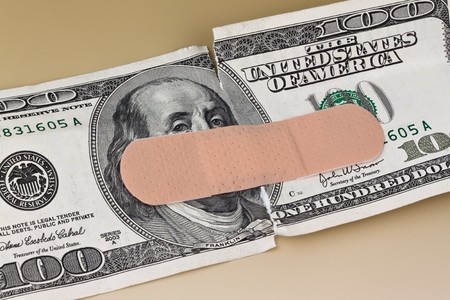
For many taxpayers without health insurance, the 2015 tax year is going to sting a lot more than 2014. The sting is the result of a significant increase in the Affordable Care Act (ACA) penalty for not having health insurance. Fortunately however, there are a lot more options to avoid the ACA penalty than many people realize.
What is the “ACA Penalty?”
The proper name for the ACA Penalty is the “Individual Shared Responsibility Payment.” This penalty is the mechanism within the Affordable Care Act which encourages individual taxpayers who are not otherwise insured – such as through an employer – to obtain health insurance for themselves. The encouragement, to those who can afford to obtain their own policy of health insurance, is by way of imposing a Federal Income Tax penalty on those who can afford such a policy but do not obtain one. The penalty applies to taxpayers who do not maintain the required minimum essential coverage during 3 [three] months or more of the tax year – i.e. taxpayers who maintained coverage for less than 9 [nine] months during the year. The penalty, however, is applicable to all taxpayers, as the required “Minimum Essential Coverage” is typically satisfied by a Marketplace plan, a plan offered by your employer, or government programs such as Medicare, Medicaid, CHIP, TRICARE, and COBRA among others.
How much is the “ACA Penalty?”
In 2014, the ACA Penalty for not having minimum essential coverage was the greater of 1% of household income, or $95 per uninsured adult. For the purposes of calculating the penalty, “household income” means all income above the taxpayer’s filing threshold. Many taxpayers chose the cheaper option of paying the penalty instead of paying for health insurance out-of-pocket for at least 3 [three] months. However, in 2015 the penalty has increased to 2% of household income or $325 per uninsured adult – whichever is greater. There are limits to how much you ultimately need to pay. In 2015, the limits for people paying a percentage of their household income is the national average price for the cheapest level of health insurance on the Marketplace. Under Rev. Proc. 2015-15, the average cost for an individual in 2015 is $207 a month, or $2,484 per year. This means that if you are paying a fine as a percentage of your income, the maximum penalty you can be assessed is $2,484 per uninsured person in your household, up to a max household size of 5 [five] people. For those paying the flat rate penalty, the limit is $975 for 2015.
All of these fines are apportioned for each month in which you did not have coverage during the year, although see below for the Short Coverage Gap Exemption. For example, if you did not have qualifying coverage for only 6 [six] months out of the year, then you would only get hit with half of the ACA Penalty amount. Likewise, if you were without insurance for only 4 months, you would only pay one-third of the penalty amount.
While the penalty amount for 2015 was much more than that of 2014, many taxpayers have still found it cheaper than paying for their health insurance out-of-pocket. Many project that this trend will shift for the 2016 tax year, as the penalty will be the greater of 2.5% of household income, or $695 per uninsured adult.
Are there any Exemptions to the “ACA Penalty?”
Yes! So take a deep breath … and then read on. Even if you should otherwise be subject to the penalty, there are quite a few exemptions which negate the penalty entirely! The comprehensive list of expemptions can be found on the IRS website. The most common exemptions to the ACA Penalty are the 1) Income Threshold Exemption, 2) Short Coverage Gap Exemption, 3) Unaffordable Insurance Exemption, 4) Medicaid Denial Exemption, and 5) General Hardship Exemption.
Income Threshold Exemption
If you make less than the minimum amount required by the IRS to file an income tax return, then you are exempt from the ACA penalty. The minimum filing threshold in 2015 depends on your filing status. For those filing with the status of Individual, the threshold is $10,300 The threshold is $13,250 for Head-of-Household, $16,600 for Qualifying Widow(er), and $20,600 for Married Filing Jointly. Unfortunately for those who must file as Married Filing Separately, the income threshold is only $4,000.
Short Coverage Gap Exemption
The ACA penalty does not apply to individuals who went without qualifying healthcare coverage for less than 3 [three] consecutive months during the tax year. This exemption exists to help out people who might have had a small gap in coverage while transitioning between plans or jobs. However, there are a couple of things to keep in mind about this exemption.
First, you can only claim 1 [one] short coverage gap during a tax year. Therefore, for example, you cannot have 2 [two] months of no coverage, then be covered for a month followed by another 2 [two] months of no coverage. The second gap will not count, and you will owe a partial penalty for the last two months.
Second, the gap must be LESS than three consecutive months. That means you must have secured coverage during the third month – not after.
Third, even one day of coverage in a month counts as coverage for that month. So if your plan ends on July 2nd, you are considered covered for the entire month of July.
Finally, coverage gaps at the end of the year are tricky. Months in the second tax year are not counted against months in the first tax year, but months in the first tax year are counted against months in the second tax year. To give an example: If you have a coverage gap from December 1, 2014 to March 1, 2015, then for the purposes of your 2014 tax return, January and March of 2015 would not have counted against your coverage gap for 2014 and you would have been able to exempt December 2014. However, when you file your 2015 tax return, you will not be able to claim an exemption for January and February, because December of 2014 will be tacked on resulting in a 3 [three] month gap, disqualifying you from claiming the exemption for the 2015 tax year.
Unaffordable Insurance Exemption
If the yearly cost of the cheapest plan available on the Marketplace would be more than 8.05% of your household income for the year, then you are exempt from the penalty. For example, if your household income for the year was $40,000, and the yearly cost for the cheapest applicable plan on the Marketplace was $4,000, then you would be exempt from the penalty. In this example, the cap on the insurance cost you are expected to bear is $3,200. It is important to note that the exact percentage will not always be 8.05% and can change from year to year, so make sure to check each tax year.
Medicaid Denial Exemption
Originally, all states were supposed to expand Medicaid under the ACA to cover all individuals who made less than 138% of the Federal Poverty Level (FPL). This expansion was important to the law because only individuals who make between 100% and 400% of the FPL qualify for a subsidy on the health insurance Marketplace. However, in National Federation of Independent Business (NFIB) v. Sebelius the Supreme Court found that the government could not force the states to expand Medicaid. This has created what is referred to as the “Medicaid Gap” where individuals fall when they do not qualify for Medicaid because their state hasn’t expanded coverage, yet they do not make enough to qualify for a Marketplace subsidy.
Although it’s a small condolence for people struggling to afford coverage, those who fall into the “Medicaid Gap” are exempt from paying the penalty for not having coverage. If you were denied coverage for Medicaid solely because your state did not expand, or if you live in a state for part of the year that did not expand Medicaid, and you made below 138% of the FPL for your household size, then you might qualify for the exemption. You can find a chart listing the 2015 Federal Poverty level for different household sizes here.
General Hardship Exemption
Some taxpayers who experienced a hardship during 2015 will qualify for a General Hardship Exemption. The hardship must be considered a “Recognized Hardship,” and a comprehensive list can be found at HealthCare.gov. If you experienced some form of recognized hardship during 2015, you can apply for a hardship exemption on the HealthCare.gov website. Common hardships include:
- Death of a family member
- You were a victim of domestic violence
- You were homeless
- You filed for bankruptcy
- You had substantial medical expenses
- Your utilities were shut off.
Miscellaneous Exemptions
There are other exemptions available for individuals in addition to the ones listed above. You may qualify for an exemption if you lived outside of the US for more than a year, if you were a part of a health care sharing ministry, you were a member of a religious sect that conscientiously objects to accepting health insurance, you were the member of an Indian tribe, or you were incarcerated, among others. To determine what other exemptions are available to you and guidance on qualifying for them, go to the IRS website.
How Do I Claim an Exemption?
To claim an exemption on your 2015 tax return, you will need to file a Form 8965 Healthcare Coverage Exception along with your Form 1040, Federal Income Tax Return. The form and instructions on how to fill out the form can be found on the IRS website at the bottom of the page.
Take note that some exemptions can ONLY be granted by the Marketplace, while other exemptions can be claimed on the form without Marketplace approval. The list on the website includes information letting you know which exemptions require approval from the Marketplace.


